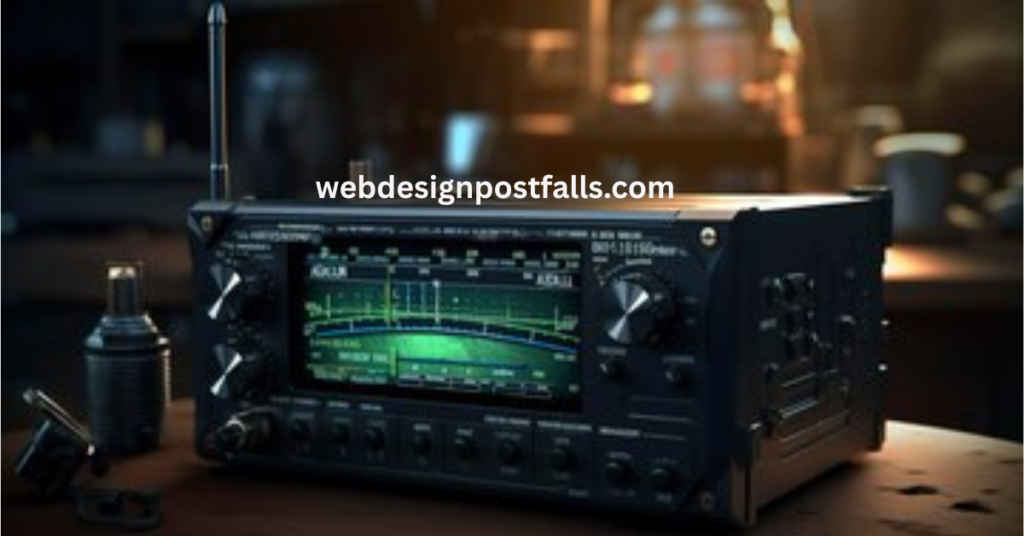In the vast and ever-evolving world of audio equipment, few devices manage to strike the perfect balance between performance, affordability, and user-friendliness. The Kato KRM 100 Receiver is one such standout product that has been gaining traction among hobbyists, audio professionals, and model railroad enthusiasts alike. Whether you’re new to signal receivers or looking to upgrade your current setup, the Kato KRM 100 offers a compelling mix of functionality and reliability that warrants serious attention.
Introduction to the Kato KRM 100 Receiver
Manufactured by Kato, a brand well-known for its innovative electronics and model train control systems, the KRM 100 Receiver is a multi-purpose receiver designed primarily for audio and signal control applications. Although specific details on this device may be limited in mainstream retail databases, its growing presence in enthusiast communities speaks volumes about its utility.
What makes the Kato KRM 100 particularly interesting is its blend of high-quality signal reception, intuitive interface, and durable build—all offered at a competitive price point. But beyond that, the device seems to strike a chord with users who value straightforward functionality over unnecessary frills.
Design and Build Quality
At first glance, the Kato KRM 100 presents a minimalist and functional design. Its compact size and lightweight structure make it ideal for both stationary setups and portable configurations. The receiver features a sturdy metal casing with well-laid-out controls and inputs, which not only enhance durability but also simplify usability.
Kato has built a reputation for creating hardware that can withstand long-term use, and the KRM 100 is no exception. Whether it’s placed in a professional studio, a home audio rig, or a model train layout, the device feels dependable and solid.
Key Features
The KRM 100 is loaded with features that make it versatile for a wide range of applications. Here are some of its most noteworthy:
1. Wide Frequency Range
One of the strongest selling points of the Kato KRM 100 Receiver is its wide frequency coverage. It can capture a broad range of signals with excellent sensitivity, ensuring you get the clearest and most accurate audio or data output possible.
This makes it suitable for everything from FM and AM radio signal reception to more specialized uses in control systems and wireless communication.
2. High-Fidelity Signal Transmission
When it comes to receivers, signal fidelity is paramount—and this is where the Kato KRM 100 Receiver shines. The unit is equipped with advanced filtering and noise suppression capabilities that minimize distortion and deliver crisp, clean audio.
For those using it in model railway applications, the clear and stable signal helps maintain reliable command and control over train functions.
3. User-Friendly Interface
Despite its technical capabilities, the Kato KRM 100 is designed with the end user in mind. The front panel includes a clear display, toggle buttons, and rotary controls that make it easy to configure and operate. Setup is fast and intuitive, even for users with limited technical background.
Whether you’re fine-tuning audio settings or adjusting frequency bands, the Kato KRM 100 Receiver keeps the process smooth and frustration-free.
4. Multi-System Compatibility
Another appealing feature is the KRM 100’s compatibility with various system protocols. For instance, in the model railway world, it can interface with both DCC (Digital Command Control) and DC (Direct Current) systems. This flexibility makes it a great choice for users transitioning from older systems to newer ones without needing to replace all their hardware.
5. Cost-Effective Performance
While many high-end receivers can easily run into the $500–$1000 range, the Kato KRM 100 Receiver keeps things affordable. Priced around $250–$350, it offers many of the features found in premium products at a fraction of the cost. This makes it especially appealing for budget-conscious hobbyists and professionals who need dependable performance without breaking the bank.
Applications and Use Cases
Though primarily marketed as a general-purpose receiver, the Kato Kato KRM 100 Receiver finds a home in a variety of specific use cases:
Model Railroading: It’s a favorite among train enthusiasts who require dependable signal reception for controlling locomotives, lighting, and sound modules.
Home Audio Systems: Its clean signal processing makes it a great addition to hi-fi setups, especially when used with amplifiers or wireless transmitters.
Educational Labs: In schools and tech institutes, it’s often used for signal analysis and training in electronics labs.
Event Production: DJs and sound engineers appreciate its compactness and clarity for use in wireless audio systems.
Comparisons to Competitors
When stacked against similarly priced receivers from brands like Yaesu, Icom, or even budget-friendly Chinese manufacturers, the Kato KRM 100 Receiver holds its own impressively well. While it might lack some of the more advanced features like digital displays or internet connectivity, it wins out in stability, ease of use, and build quality.
In fact, its “no-nonsense” approach appeals to users who prioritize performance over flashy gimmicks.
Pros and Cons
Pros:
High-quality signal reception
Durable, compact design
Easy to set up and operate
Compatible with various systems
Affordable pricing
Cons:
Limited availability in mainstream stores
Lacks advanced digital features found in premium models
Not ideal for users needing extensive connectivity options (e.g., Wi-Fi, Bluetooth)
User Reviews and Community Feedback
Online forums and user communities reflect a generally positive sentiment toward the Kato KRM 100 Receiver. Enthusiasts often highlight its reliability and longevity as standout traits. Many report years of continuous use with no significant issues, even in challenging environments.
Some advanced users do wish for firmware updates or expansion options, but overall satisfaction remains high.
Conclusion
The Kato KRM 100 Receiver is a hidden gem in the world of signal and audio equipment. With its strong core features, robust design, and competitive pricing, it offers tremendous value for anyone needing a dependable receiver for audio or control applications.
While it may not boast the bells and whistles of high-end digital models, it more than makes up for that in stability, clarity, and ease of use. Whether you’re a model railroader, audio professional, or tech hobbyist, the KRM 100 is a solid investment that delivers on its promises.

